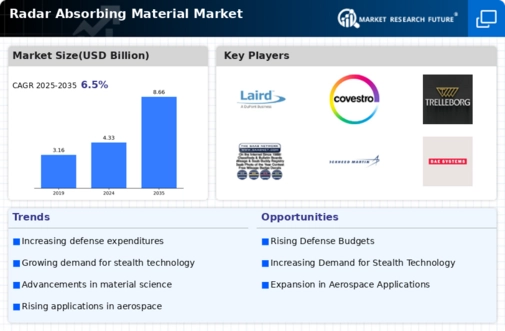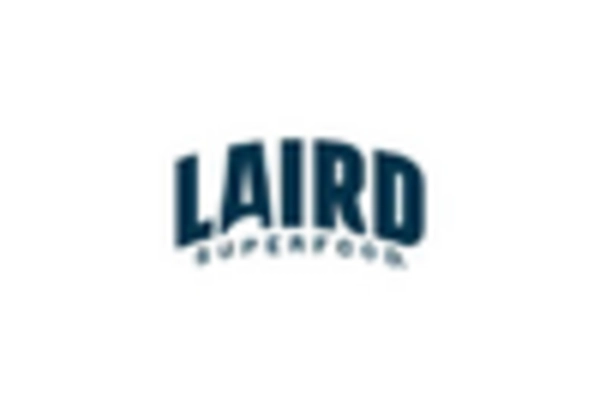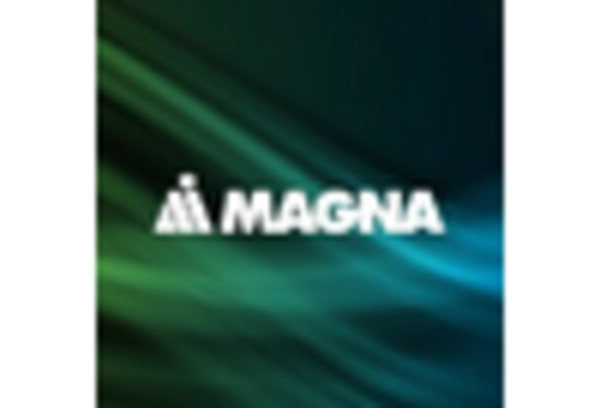Increasing Defense Expenditure
The Radar Absorbing Material Market is experiencing growth due to rising defense budgets across various nations. Countries are investing heavily in advanced military technologies, which include radar-absorbing materials for stealth applications. For instance, the defense expenditure in regions such as North America and Asia-Pacific has seen a notable increase, with estimates suggesting a compound annual growth rate of around 3-5% over the next few years. This trend indicates a robust demand for radar-absorbing materials, as military forces seek to enhance their operational capabilities and reduce radar visibility. Consequently, the Radar Absorbing Material Market is likely to benefit from these investments, as manufacturers strive to meet the evolving needs of defense contractors and government agencies.
Growing Demand in Aerospace Sector
The Radar Absorbing Material Market is significantly influenced by the aerospace sector, which is witnessing a surge in demand for advanced materials. The aerospace industry is increasingly adopting radar-absorbing materials to improve the stealth characteristics of aircraft and drones. With The Radar Absorbing Material projected to reach approximately USD 1 trillion by 2025, the need for innovative materials that can reduce radar cross-section is paramount. This trend is further supported by the increasing number of defense contracts awarded to aerospace manufacturers, which often stipulate the use of radar-absorbing materials. As a result, the Radar Absorbing Material Market is poised for growth, driven by the aerospace sector's focus on enhancing performance and survivability.
Expansion of Automotive Applications
The Radar Absorbing Material Market is witnessing an expansion into the automotive sector, driven by the increasing integration of radar systems in vehicles. As the automotive industry moves towards advanced driver-assistance systems (ADAS) and autonomous vehicles, the demand for radar-absorbing materials is expected to rise. These materials play a crucial role in minimizing interference and enhancing the performance of radar sensors used in vehicles. With the automotive market projected to grow significantly, the Radar Absorbing Material Market is likely to see increased opportunities as manufacturers develop solutions tailored for automotive applications, thereby diversifying their customer base and revenue streams.
Regulatory Support for Stealth Technologies
The Radar Absorbing Material Market is also influenced by regulatory frameworks that promote the development and use of stealth technologies. Governments are increasingly recognizing the strategic importance of radar-absorbing materials in enhancing national security. As a result, there are initiatives aimed at supporting research and development in this field. For instance, defense agencies may provide funding for projects that focus on improving radar-absorbing technologies. This regulatory support is likely to stimulate innovation and investment in the Radar Absorbing Material Market, as companies align their strategies with government priorities and seek to capitalize on available resources.
Technological Innovations in Material Science
The Radar Absorbing Material Market is benefiting from ongoing technological innovations in material science. Researchers are developing new composites and coatings that exhibit superior radar absorption properties, which are essential for modern military applications. Innovations such as metamaterials and nanomaterials are being explored to enhance the effectiveness of radar-absorbing materials. The introduction of these advanced materials is expected to create new opportunities within the market, as manufacturers seek to incorporate cutting-edge technologies into their product offerings. This focus on innovation is likely to drive competition and lead to the emergence of more efficient radar-absorbing solutions, thereby propelling the Radar Absorbing Material Market forward.

















Leave a Comment